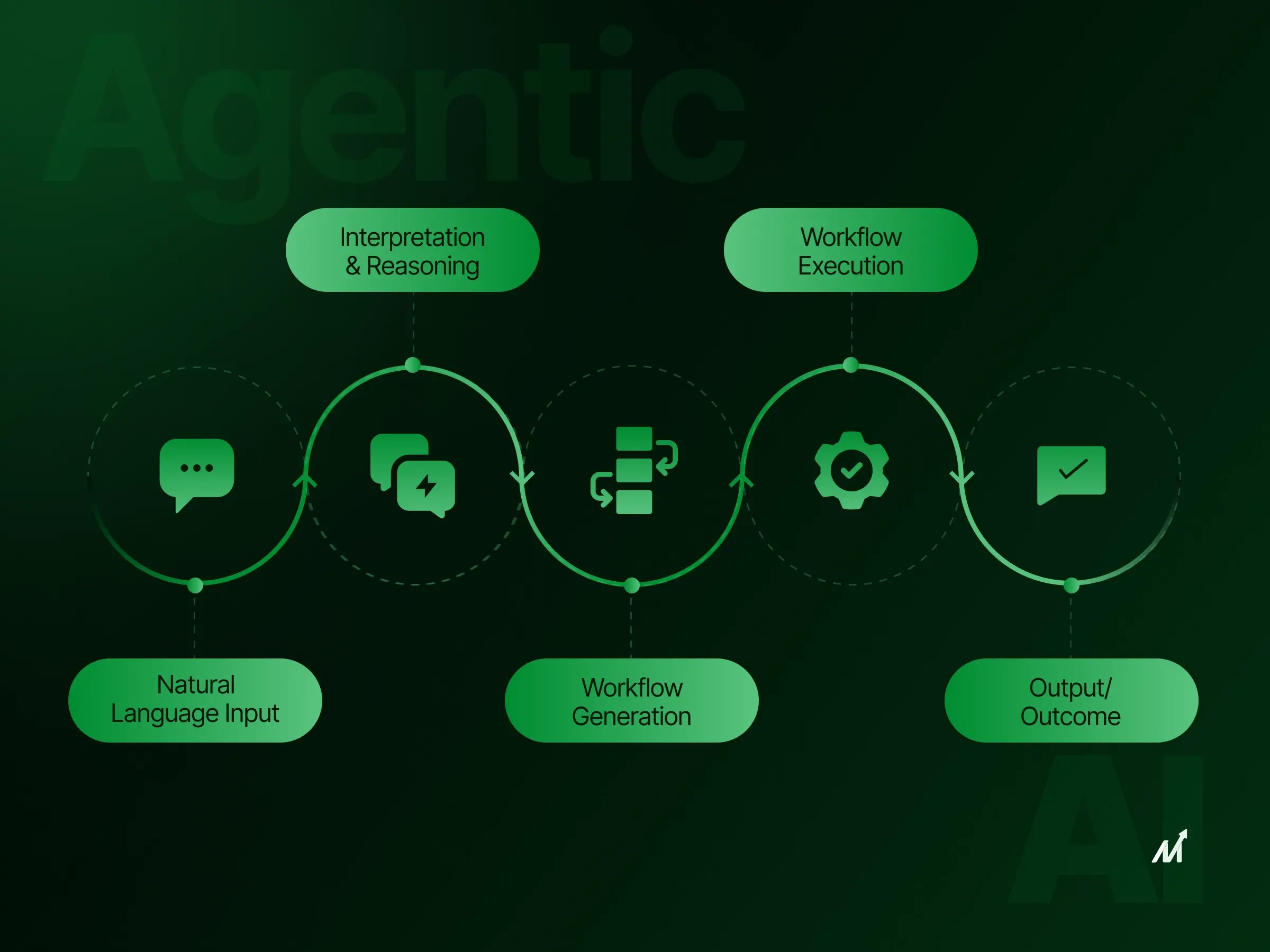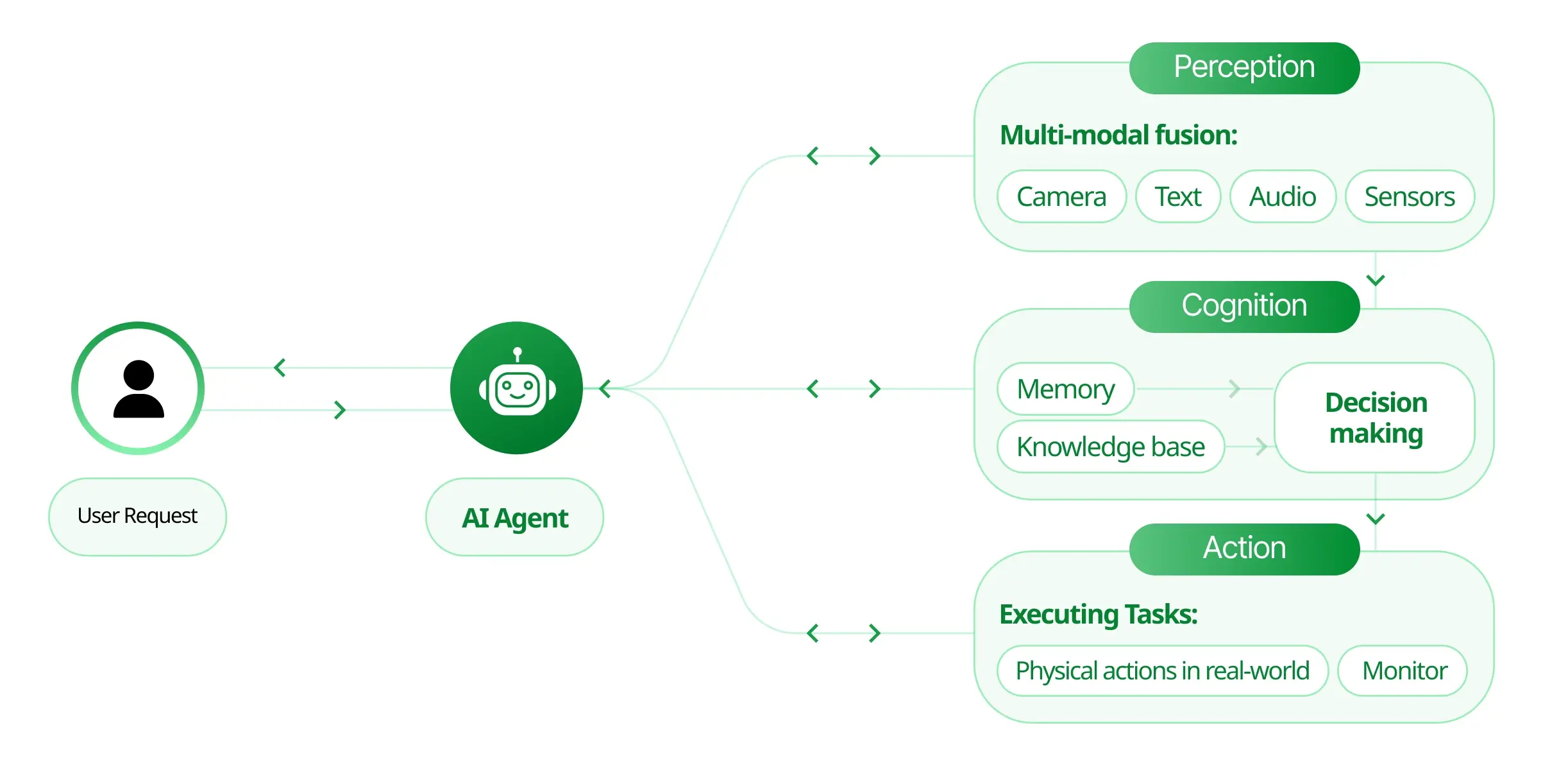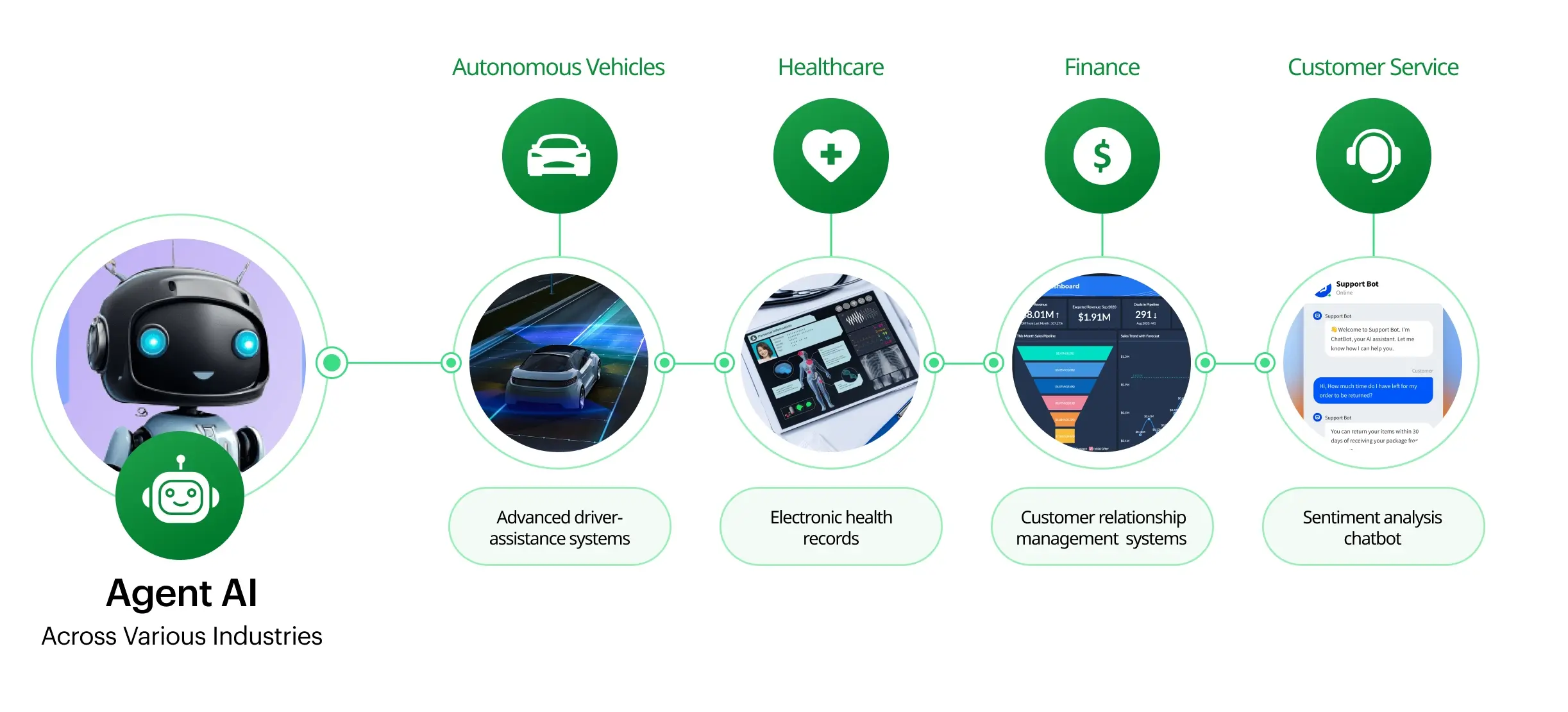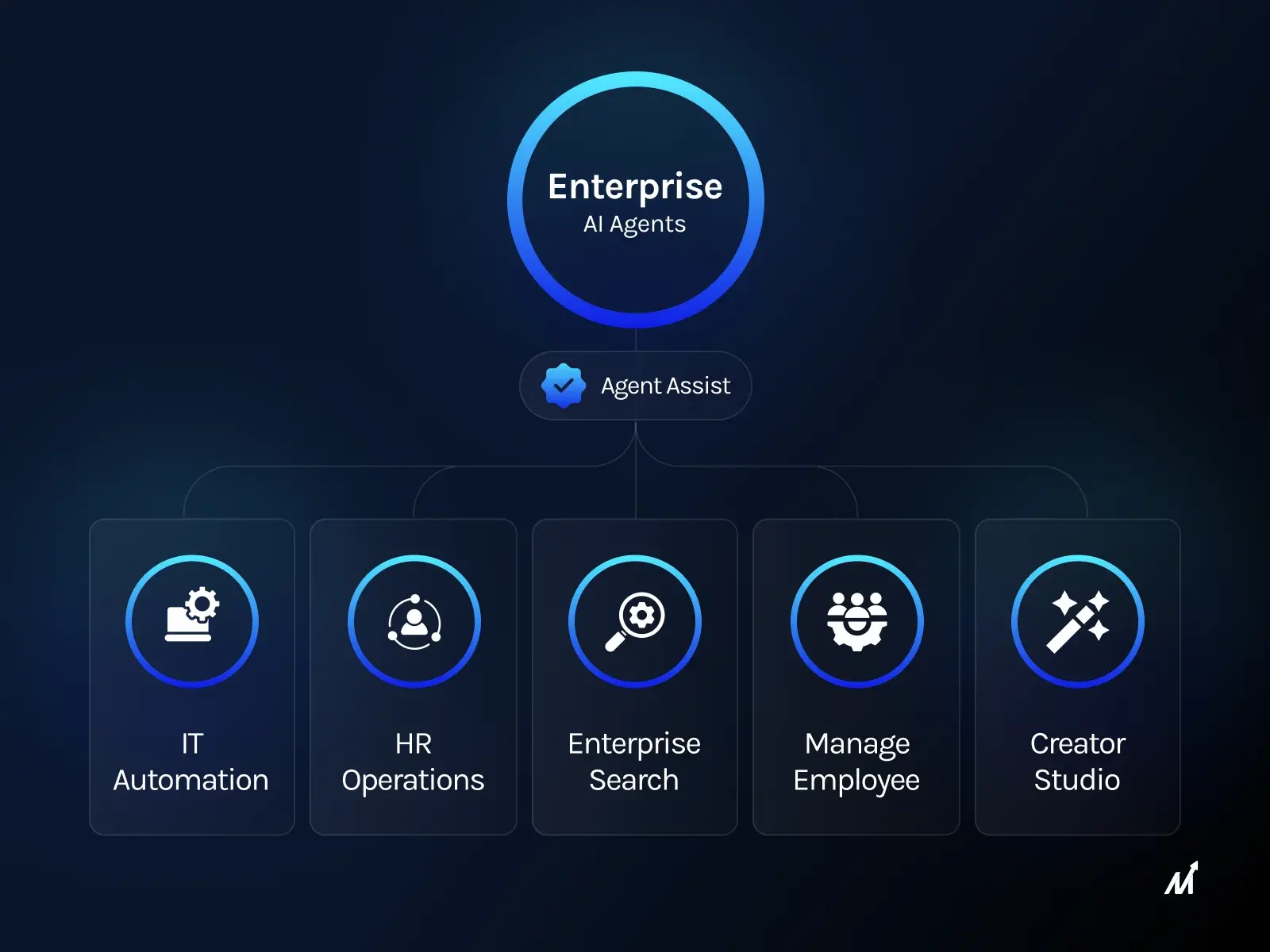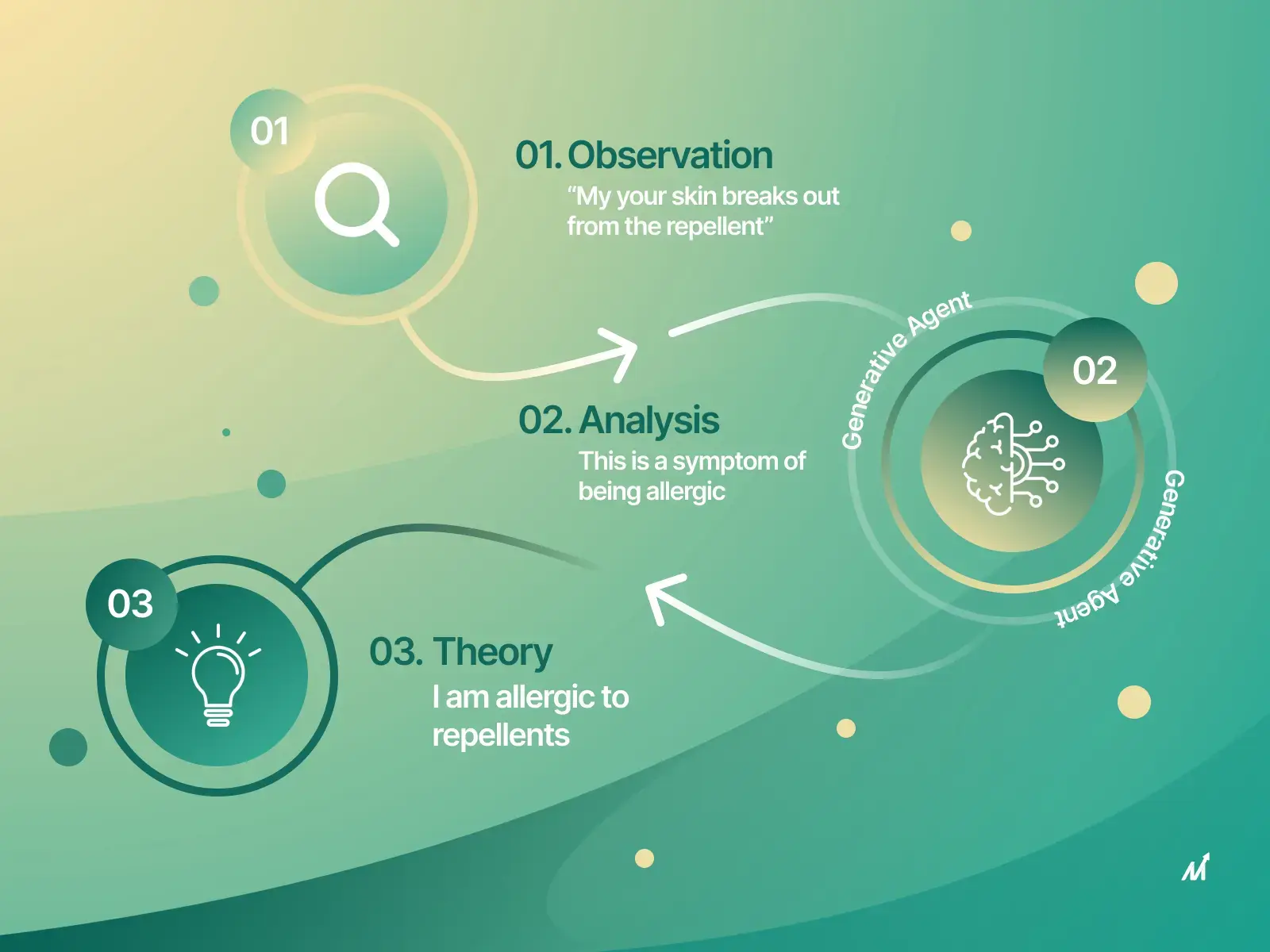Agentic AI Architecture is an advanced framework designed to develop AI systems capable of acting autonomously to achieve specific goals. This architecture integrates several key components and principles to create highly effective and intelligent agents.
These agents are structured to perceive their environment, process information, make decisions, and execute actions in a coordinated and efficient manner. Drawing from recent research, particularly the insights from the paper “Foundations of Agentic AI Systems”, this article delves into the technical intricacies of Agentic AI Architecture, exploring its core components, key principles, development phases, technological integrations, applications, challenges, and future directions.
- Core Components Of Agentic AI Architecture
- Key Principles Guiding Agentic AI Architecture
- Development Phases Of Agentic AI Systems
- Technological Integration For Enhanced AI Capabilities
- Agentic AI’s Applications Across Various Industries
- Challenges In Implementing AI Agentic Systems
- Future Directions For AI Agentic Architecture
- How Markovate Can Help?
Core Components of Agentic AI Architecture
Perception
Perception integrates sensory data to understand and interpret the environment. This involves:
- Multi-modal Fusion: Combining data from various sources (cameras, microphones, sensors) to enhance situational awareness.
- Noise Robustness: Ensuring the agent can operate effectively even with noisy or incomplete data.
Cognition
Cognition processes information, makes decisions, and learns from experiences. Key technologies include:
- Deep Learning Models: For complex pattern recognition and decision-making.
- Reinforcement Learning: For learning optimal behaviors through rewards and punishments.
- Probabilistic Reasoning: To handle uncertainty and make informed decisions.
- Meta-learning: To enable the agent to learn new tasks rapidly by leveraging past experiences.
Action
The action involves executing tasks based on cognitive decisions, including:
- Control Algorithms: For precise task execution.
- Robotics and Actuation: For physical actions in real-world environments.
- Feedback Loops: To monitor and adjust actions in real time.
Key Principles Guiding Agentic AI Architecture
Modularity
Modularity is the principle of separating different functions into distinct modules. Each module is designed to perform a specific task, such as perception, cognition, or action. This separation allows for easier development, maintenance, and upgrading of individual modules without affecting the entire system. Modularity enhances the flexibility and robustness of the AI architecture, facilitating the integration of new technologies and methods as they emerge.
Scalability
Scalability refers to the AI agent’s ability to expand its computational resources and capabilities to handle increasing amounts of data and complexity. Scalable architectures employ distributed computing, cloud-based infrastructures, and parallel processing to ensure that the system can grow and adapt to higher demands without compromising performance.
Interoperability
Interoperability ensures that different modules and systems can work together seamlessly. This principle is crucial for integrating diverse technologies and functionalities into a cohesive AI agent. Standardized communication protocols, data formats, and interfaces are implemented to facilitate smooth interaction between various components, allowing for the seamless integration of third-party services and legacy systems.
Adaptability
Adaptability enables the AI agent to learn from new experiences and adapt to changing environments. This principle is vital for maintaining the relevance and effectiveness of the AI system over time. Adaptive systems use techniques such as online learning, transfer learning, and dynamic model updating to modify their behavior based on new data, feedback, and evolving conditions.
Development Phases of Agentic AI Systems
Requirement Analysis
Requirement analysis is the initial phase where the specific needs and goals of the AI agent are identified. This involves understanding the problem domain, defining objectives, and determining the functional and non-functional requirements of the system. Detailed user stories, use cases and system specifications are developed to guide the design and implementation phases.
Design
The design phase involves structuring the AI architecture with modularity and scalability in mind. Detailed blueprints of each component and their interactions are created. This phase also includes selecting appropriate technologies and frameworks that align with the overall goals. Architectural patterns such as microservices, service-oriented architecture (SOA), and event-driven architecture (EDA) are often employed to enhance flexibility and scalability.
Implementation
During the implementation phase, the various modules of the AI agent are developed and integrated. This includes coding, configuring, and setting up the hardware and software components required to build the perception, cognition, and action functionalities. Continuous integration and continuous deployment (CI/CD) pipelines are established to automate testing and deployment processes, ensuring rapid and reliable update delivery.
Testing
Testing is a critical phase in which the AI system undergoes rigorous evaluation to ensure functionality, efficiency, and reliability. Different testing methodologies, such as unit testing, integration testing, and performance testing, are employed to identify and resolve any issues. Simulation environments and real-world pilot testing are used to validate the system’s performance under various conditions.
Deployment
Deployment involves rolling out the AI system in real-world scenarios. This phase requires careful planning to ensure a smooth transition from development to operational use. Deployment strategies include pilot testing, phased rollouts, and full-scale implementation. Deployment automation tools and infrastructure-as-code (IaC) practices are often used to streamline and secure the deployment process.
Monitoring and Maintenance
Continuous monitoring and maintenance are essential to ensure the ongoing performance and reliability of the AI system. Teams conduct regular updates, performance evaluations, and troubleshooting to address any emerging issues and improve the system over time. They use monitoring tools and frameworks like Prometheus, Grafana, and the ELK stack to track system performance and detect anomalies.
Technological Integration for Enhanced AI Capabilities
Machine Learning
Machine learning is a core technology for cognitive processes and learning from data. It enables the AI agent to recognize patterns, make predictions, and improve its performance based on past experiences. Researchers commonly use techniques such as supervised learning, unsupervised learning, and reinforcement learning. They employ advanced methods like neural architecture search (NAS) and automated machine learning (AutoML) to optimize model architectures and training processes.
Natural Language Processing
Natural Language Processing (NLP) enhances the interaction capabilities of the AI agent. NLP allows the system to understand, interpret, and generate human language, facilitating communication with users through text or speech. Organizations leverage transformer models like BERT and GPT for tasks such as language understanding, text generation, and conversational AI.
Computer Vision
Computer vision helps in perception by enabling the AI agent to process and interpret visual data. This technology is crucial for applications such as object recognition, image analysis, and scene understanding, providing the agent with a visual understanding of its environment. Researchers and engineers utilize techniques such as convolutional neural networks (CNNs), object detection algorithms, and image segmentation to enhance visual perception.
Agentic AI’s Applications Across Various Industries
Autonomous Vehicles
Autonomous vehicles use Agentic AI Architecture for real-time navigation and decision-making. The perception component gathers data from sensors, the cognition component processes this data to make driving decisions, and the action component executes these decisions to control the vehicle. Advanced driver-assistance systems (ADAS) and full self-driving (FSD) technologies rely heavily on these components to ensure safety and efficiency.
Healthcare
In healthcare, AI agents can provide personalized patient care and diagnostics. They can analyze medical data, assist in diagnosis, recommend treatments, and even monitor patients’ health in real-time. AI-driven systems can integrate with electronic health records (EHRs) and utilize medical imaging, genomics, and wearable device data to offer comprehensive healthcare solutions.
Finance
In the finance sector, companies use AI agents for predictive analysis and automated trading. They can analyze market trends, make investment decisions, and execute trades autonomously, optimizing financial operations. AI-powered risk management, fraud detection, and customer relationship management (CRM) systems also play a crucial role in enhancing financial services.
Customer Service
Challenges in Implementing AI Agentic Systems
Ethical Considerations
Ensuring that AI agents act within ethical boundaries is a significant challenge. This involves addressing issues related to bias, fairness, transparency, and accountability to prevent harm and ensure trustworthiness. Experts develop ethical AI frameworks and guidelines to guide the design, implementation, and deployment of AI systems, ensuring alignment with societal values and legal standards.
Security
Protecting AI systems from malicious attacks is crucial. To enhance the security of AI systems, organizations implement security measures to safeguard data, prevent unauthorized access, and ensure the integrity and confidentiality of the AI system. They employ techniques such as secure coding practices, encryption, and anomaly detection.
Complexity Management
Managing the complexity of integrating various modules and technologies is a daunting task. Effective project management, clear documentation, and robust testing strategies are essential to handle the intricacies of Agentic AI Architecture. Teams use modular design, reusable components, and automated testing frameworks to manage and reduce system complexity.
Future Directions for AI Agentic Architecture
Enhanced Learning Mechanisms
Improving how AI learns from limited data is a key area of future research. Researchers are exploring techniques like few-shot learning, transfer learning, and unsupervised learning to enhance the learning capabilities of AI agents.These methods aim to reduce the dependency on large datasets and accelerate the learning process.
Better Interoperability
Seamless integration with other emerging technologies, such as the Internet of Things (IoT) and blockchain, will enhance the functionality and versatility of AI agents. Improved interoperability will enable more comprehensive and cohesive systems, allowing AI agents to leverage data and capabilities from a wide range of sources.
Human-AI Collaboration
Enhancing collaboration between humans and AI agents is a promising future direction. Developing interfaces and interaction models that facilitate effective cooperation between human operators and AI systems will unlock new possibilities and applications. Human-in-the-loop approaches, explainable AI (XAI), and user-friendly interfaces are key areas of focus to improve human-AI collaboration.
How Markovate Can Help?
Using the advanced Agentic AI architecture framework, we can significantly accelerate the development of autonomous AI systems by providing comprehensive expertise and tailored services throughout the development lifecycle.
Thus, we offer expert consultation to identify optimal AI applications, define project goals, and perform detailed requirement analyses to ensure alignment with business objectives. Our team handles custom AI development, ensuring the AI systems are modular, scalable, and interoperable, leveraging cutting-edge technologies and best practices for robust and adaptable systems.
Additionally, we facilitate seamless integration with existing infrastructures and manage the complexities of module integration, ensuring smooth functionality and interoperability. Our deployment strategies, including pilot testing and phased rollouts, ensure a successful transition to operational use.
After deployment, our AI engineers provide continuous monitoring, maintenance, and support, with regular updates, performance evaluations, and troubleshooting services offered to maintain the effectiveness and reliability of the Agentic AI system.
Conclusion
In conclusion, Agentic AI Architecture represents a sophisticated framework for developing autonomous AI systems. By leveraging advanced technologies and adhering to core principles, this architecture enables the creation of intelligent agents capable of performing complex tasks in various domains. While challenges exist, ongoing research and development are paving the way for more robust, adaptable, and ethically sound AI systems.

I’m Rajeev Sharma, Co-Founder and CEO of Markovate, an innovative digital product development firm with a focus on AI and Machine Learning. With over a decade in the field, I’ve led key projects for major players like AT&T and IBM, specializing in mobile app development, UX design, and end-to-end product creation. Armed with a Bachelor’s Degree in Computer Science and Scrum Alliance certifications, I continue to drive technological excellence in today’s fast-paced digital landscape.

